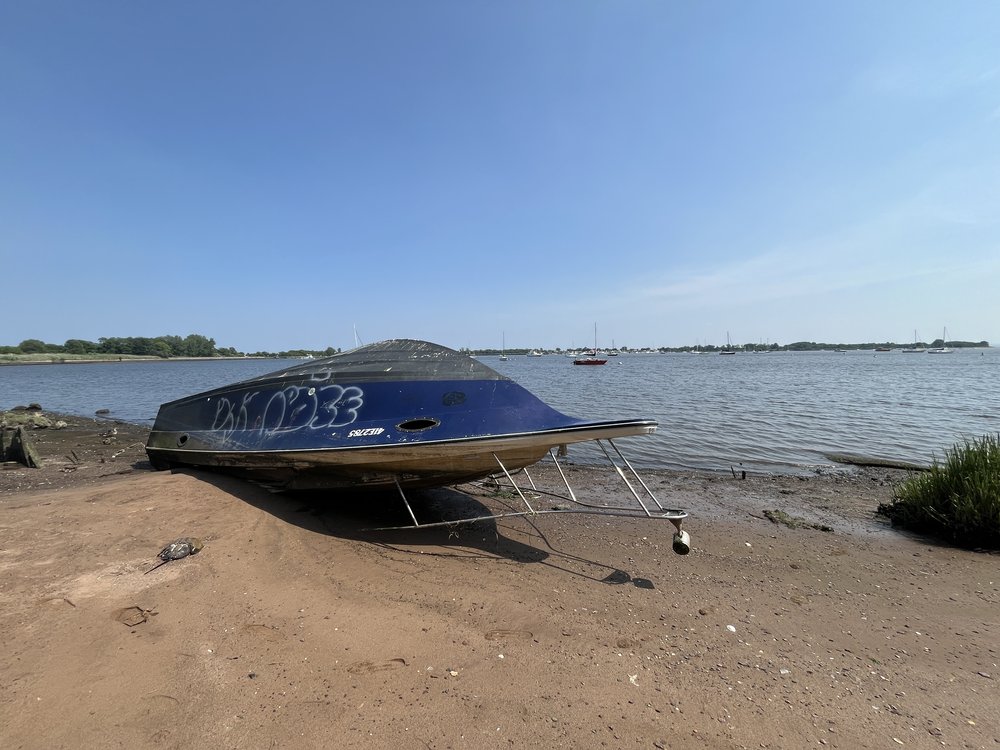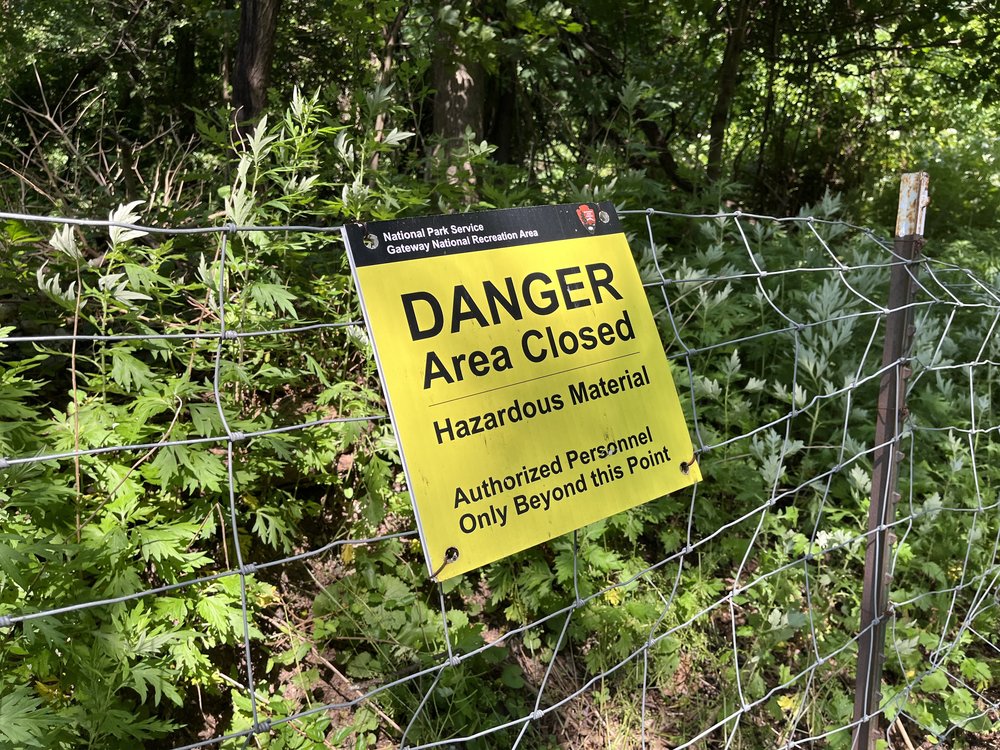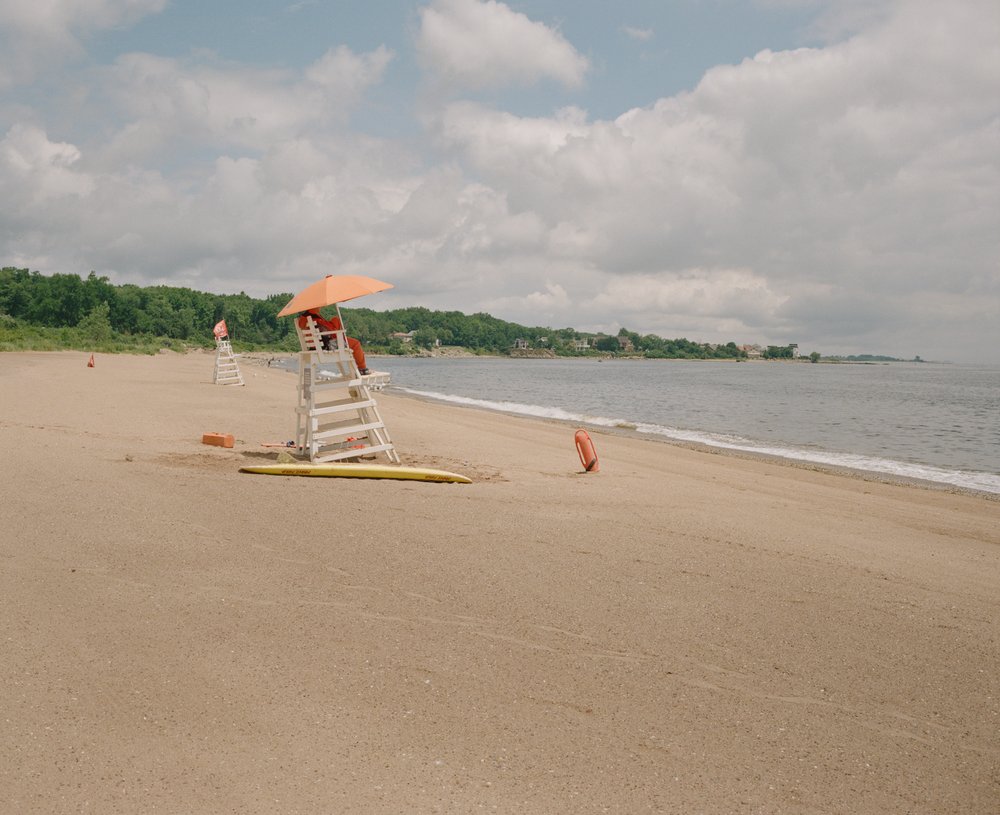Staten Island's 'lost city' of wild beaches is a spiritual refuge for New Yorkers
July 4, 2025, 6:31 a.m.
Many of the borough's beaches are secluded and lack lifeguards. For many visitors, that’s key to their appeal.

Staten Island's shores are still speckled with scars from Hurricane Sandy’s devastating storm surge back in 2012. The waters are murky, sometimes bordering on foul, a product of sewage runoff into New York Harbor. A stretch of parkland near the waterfront is even slightly radioactive.
Yet the 14 miles of beaches along the city’s least populated borough are nonetheless beloved by locals, and offer a more tranquil refuge than the sandy coastlines in Brooklyn and Queens, which are often cramped with sunbathers. And while most of the waterfront is not designated for swimming, there are plenty of sparsely populated areas to enjoy.
“It’s a wild beach,” said Boris Vinokur, 71, as he relaxed on the southwestern shore of the borough looking out onto Raritan Bay. “No lifeguards. We used to climb over [the rocks], kayak. Nice place.”
For those who don’t live in the borough, visiting many of Staten Island’s beaches requires either driving over a bridge or taking a lengthy transit trip, which can be sped up by riding a bicycle from a railway station.

But for some visitors, the seclusion is part of the charm. Conference House Park, for example, sits at New York state's southernmost point. Like many of the borough’s beaches, it lacks basic amenities. Instead of snack stands, it’s filled with wild turkeys and devoid of human beings.
“For some reason Staten Island's like the lost city,” said Sal Spurge, who lives near the federally managed Great Kills Park farther north.
Spurge spent part of a recent afternoon walking along the beach near Wolfe’s Pond Park about 3 miles south of Great Kills, cleaning up old bricks that were littered on the sand.
He said that a lack of enforcement around parking and other rules often leaves sections of Great Kills Park in need of cleaning. He also pointed to fences that were erected to cordon off areas after a cleanup of radioactive waste in a former landfill began near the park's entrance almost 20 years ago.

“ The rumor is that they buried X-ray equipment there,” Spurge recalled. “The back road of the harbor was open for years and then all of a sudden everything stopped and they said that they detected high levels of radiation and that was the end of that.” The National Park Service says that remediation of the area is underway and that multiple sections remained closed for safety reasons.
The radiation mitigation is minor in scope compared to plans to build a massive seawall to protect coastal communities from future storms, a project that’s still years from completion.
Almost half of the people killed in New York City during Hurricane Sandy were on Staten Island, and the destruction – and recovery – is evident in many of the new communities that dot the shoreline.
Vinokur pointed to a series of large sea walls along the horizon, which resembled giant sea slugs made of boulders. They were installed to help prevent devastation like Hurricane Sandy brought in 2012.
“Our house was untouched,” he said. “This first line was destroyed almost completely. They built after Sandy to protect all those houses and shoreline.”
The borough’s beaches aren’t all wild — some are staffed by city parks department lifeguards. Cedar Grove Beach, which became part of the parks department public beach system in the early 2010s, stands out among Staten Island beaches, thanks to its Dune-like expanse of sand.

Midland and South Beach, two biggest and most popular beaches on the island, also attract relatively larger crowds. But there’s no guarantee these spots will be open for swimming.
Staten Island’s beaches are more likely to be closed due to bacteria from stormwater runoff than any other borough’s. Visitors are warned to check for any water quality advisories before heading out.
But for many locals like Anthony Marasco, a retired firefighter, the allure of Staten Island’s shoreline isn’t the surf — but the isolation from an otherwise chaotic city.
“ I mean, just look out here. This Is Staten Island, but it doesn't look like it from here,” said Marasco, 62. “We enjoy the seclusion.”
Rockaway Beach guide: NYC's greatest shoreline is filled with hidden delights